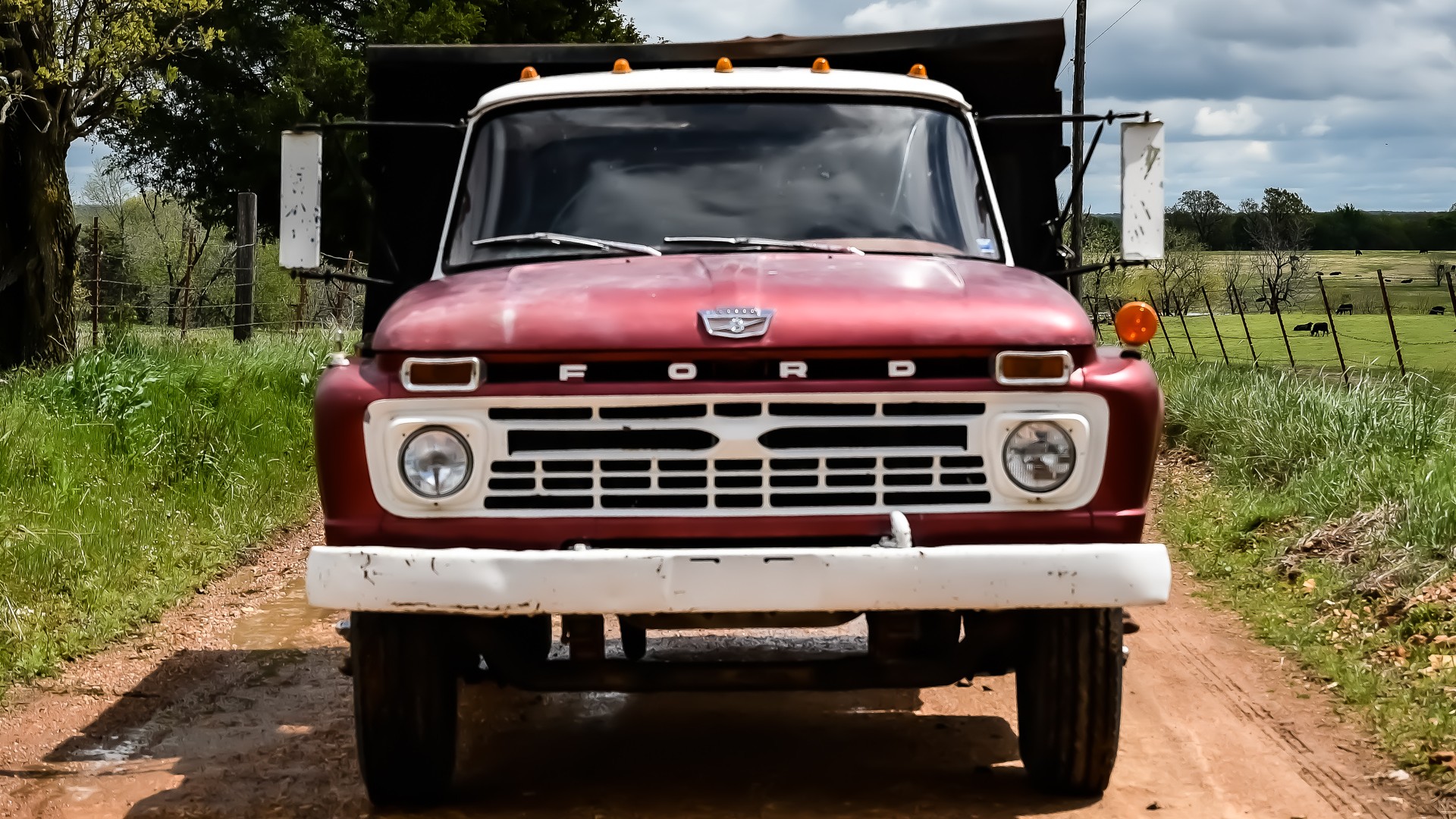

We may earn revenue from the products available on this page and participate in affiliate programs. Learn more ›
About two beautiful weeks into my ownership of my 1966 Ford F600, I had my inevitable wake-up call. Driving—and working—old cars and trucks always leads to repairs big and small, something I learned firsthand when the dump bed frame snapped with a loud POP! as a five-ton load of gravel tilted skyward. Such is to be expected, though, given that it’s been worked hard throughout a life that started during the Vietnam War era. Parts will break—it’s that simple.
What I didn’t expect to see was the hodgepodge of repairs that had been made by previous owners, all without any permanent fixes to prevent the same things from breaking again. And again. As a matter of fact, the bed’s frame failed directly beside another weld that had been made to fix an identical break some years ago.
I’ll address everything else in due time, but in that exact moment, I needed to get this behemoth’s bed fixed. After all, I bought it to work! Not to stare at. Okay, maybe a bit of both.

For starters, the old steel plate—which was properly split in two by yours truly—had to go. This involved a hefty dose of grinding and crowbar-ing, though it came apart fairly easily.


Once the scrap metal was removed, we had to prep the surface by smoothing it over with a grinder. Who knew that would come in handy so much? You did? Well, all right.
My brother-in-law, who just so happens to be pretty skilled with a stick welder, started in on bringing the frame back together again. This, of course, involved a chain and perhaps one of the most useful tools in the universe: a come along. If you’re not familiar, it’s essentially a hand-powered, ratcheting winch that can pull with an incredible amount of force when properly set up. With a boom seemingly large enough to crank a semi from a 10-foot ditch, it cinched the now-cleaned frame together with ease.
Maybe I’m easily impressed, but to me this was the coolest part of the whole repair. I’m just glad we didn’t need a forklift or any other heavy machinery to do the job.

A sizable gap from a previous break on the bottom of the frame prevented us from making a weld all the way around, though we had a steel plate ready for reinforcement. With the two pieces heated together, we began cutting the plate to go around the boss, where the pin exits through.


Alas, with the final step of joining the plate’s two halves, the job was complete. From start to finish, it was a three-hour task—that includes a fair amount of BSing along with a celebratory joy ride to the bottom of the hill and back.
During this impromptu repair, though, we spotted a handful of other loose ends that’ll need tying up if we want to avoid doing the same job over again. For starters, the bed’s passenger-side subframe is showing signs of—you guessed it—cracking. It too has been repaired before, though it seems to be holding on all right for now. This will surely change over time if we don’t take action, given how most of the flex will now be transferred to that side with our most recent repair.

Further back, the rear of the bed’s frame is only fastened by one (1) bolt on each side, directly underneath the tailgate. Said bolt is supposed to clamp that half together, avoiding slop. However, the wood plank—remember those?—that it’s supposed to run through has largely rotted away on one side, putting the bolt in a pinch. Whoever installed it also didn’t fit any washers, either, so that’ll likely be my first focus going forward.
I’ll also be replacing the blocks of wood I was so concerned with previously. As I’ve since learned, those are in place to prevent a few different problems, like the frames rubbing together, rusting, and squeaking. I assure you, the ones that are equipped right now aren’t in the best of shape. Luckily, I come from a family of sawmill pros so finding new lumber shouldn’t be all that hard.
In the meantime, I’ll be taking it easy and doing more preventative maintenance. The ol’ Ford is due for fresh grease pretty much everywhere, and I’ve got to check my fluids. Between the frame repairs and replacing my rear axle seals, I’ll likely have my hands full, but it’s a rewarding experience.
I’m just happy to be here, and owning a sweet vintage rig like this makes it even better.



Caleb Jacobs is Deputy News Editor at The Drive. He buys weird things, like a ’66 Ford dump truck and a ’65 Chevy school bus. We continue to employ him, though we can’t seem to understand why.
